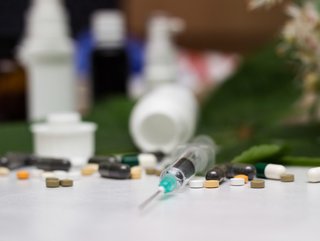Request Demo
ProPharma: AI use in Drug Side Effects Testing 'Dangerous'
02 Apr 2024

Preview
Source: Healthcare Digital
Pharmacovigilance is the practice of collecting, detecting, assessing, monitoring and preventing adverse effects of pharmaceutical products,
Use of AI in adverse drugs reactions testing could be dangerous says Laura Hopper, Pharmacovigilance President at regulatory sciences firm, ProPharma
The use of AI to automate case processing “raises a lot of red flags”, a leading drug safety expert has told Healthcare Digital.
Laura Hopper is Global President of Pharmacovigilance at ProPharma, a leading regulatory sciences consulting firm offering support across the full lifecycle for drugs, biologics, medical devices, and diagnostics.
Pharmacovigilance is the practice of collecting, detecting, assessing, monitoring and preventing adverse effects of pharmaceutical products. Hopper says that talk of AI use cases in this area is rife in the pharma world right now.
“Attend any conference lately and all the buzz seems to be about‘ hands-free case processing and using AI in safety cases,” she says, adding: “By definition, this means replacing the work of humans with the work of a system, and while I am a firm believer in seeking to improve processes, this notion raises a lot of red flags for me.”
Hopper points out that by its nature, pharmacovigilance involves sifting mountains of data, and determining how that data will be aggregated and shared. She says that in many instances, this involves making nuanced judgement calls.
“Event terms are compared to the reference safety information provided for the product,” she says, going on to say that, in clinical trials, “both the specificity and severity of the term also need to be considered in making this assessment”.
She adds: “There is nothing black and white about this determination, which often results in the medic and the client debating the best option.”
Drug assessments 'require medical training'
Hopper says that, when writing event narratives, assessments are continually required to determine numerous factors, including:
What facts about the clinical picture should be included
What pieces of data link together to potentially show an alternate causality
Where a conclusion cannot accurately be understood without additional information.
“Contract research organisations have tried using staff without life-science degrees to author these narratives with limited success,” she says. “Typically, the result is a narrative that includes everything but the kitchen sink, causing the possibility of a truncated narrative to be received by health authorities. The training that a nurse, pharmacist, or medic brings to these assessments allows for more streamlined, comprehensive summaries to be generated.”
While Hopper concedes that such processes “can to some extent be performed by AI”, she says there are two drawbacks.
First, she says, is the additional work the client or the medic would be required to quality-check each of these areas and make the needed updates.
“This not only shifts the heavy lifting to the most expensive resource but adds significant time to the workload of arguably the busiest resource on a programme,” she says. “The risks include increased errors, cost, and frustration on the part of the medic.”
Under-reporting a danger of AI in pharmacovigilance
A second “dangerous” drawback, she says, is the possibility of “drastic over- or under-reporting of events, potentially leading to fines”.
She adds: “There is the danger also of a shift in the data contributing to the safety profile of the product.”
This, she says, changes the way data is presented to health authorities, patients, investigators, and pharmacies.
“Changing the efficacy of event narratives potentially alters approvals for clinical trials or marketing authorisation if product safety looks reduced or, conversely, potentially allows an unsafe product to be approved.”
She adds: “There is always more to do in the area of process efficiency but completely removing the human assessments from pharmacovigilance practices increases the level of risk to patients, which is not a risk we can afford.”
For more details,please visit the original website
The content of the article does not represent any opinions of Synapse and its affiliated companies. If there is any copyright infringement or error, please contact us, and we will deal with it within 24 hours.
Organizations
Indications
-Targets
-Drugs
-AI Agents Built for Biopharma Breakthroughs
Accelerate discovery. Empower decisions. Transform outcomes.
Hot reports
Get started for free today!
Accelerate Strategic R&D decision making with Synapse, PatSnap’s AI-powered Connected Innovation Intelligence Platform Built for Life Sciences Professionals.
Start your data trial now!
Synapse data is also accessible to external entities via APIs or data packages. Empower better decisions with the latest in pharmaceutical intelligence.




